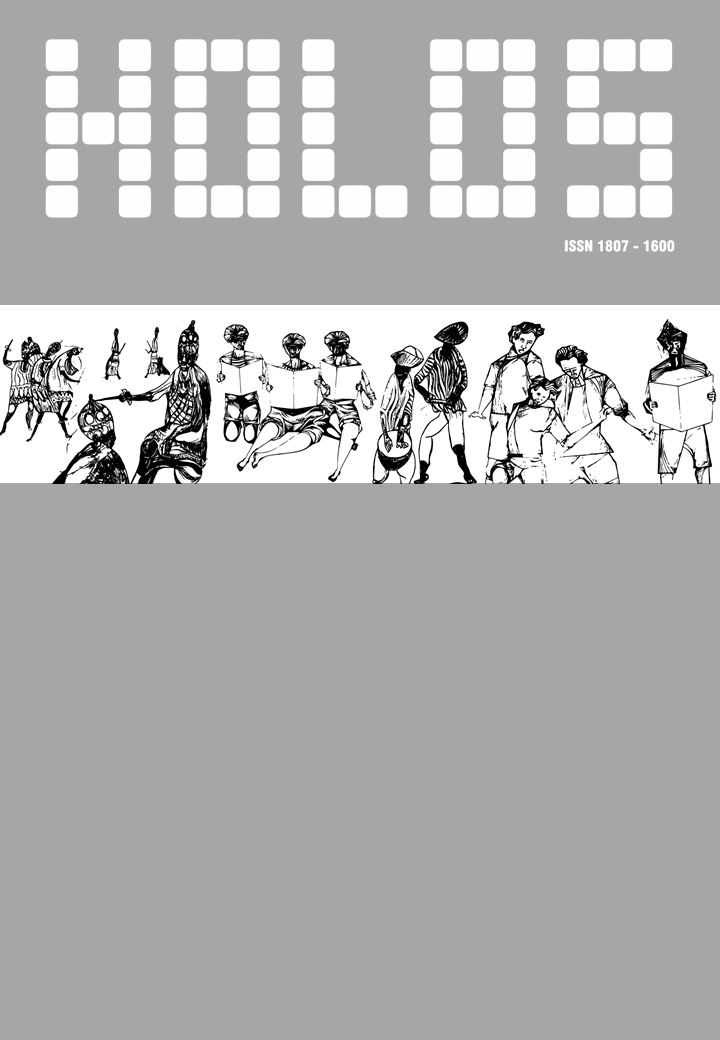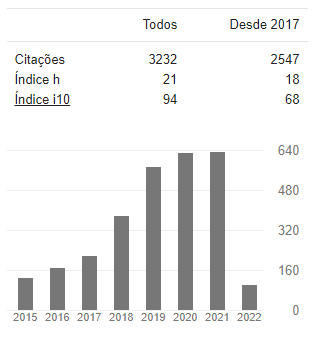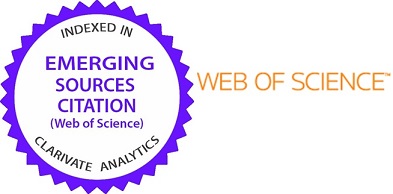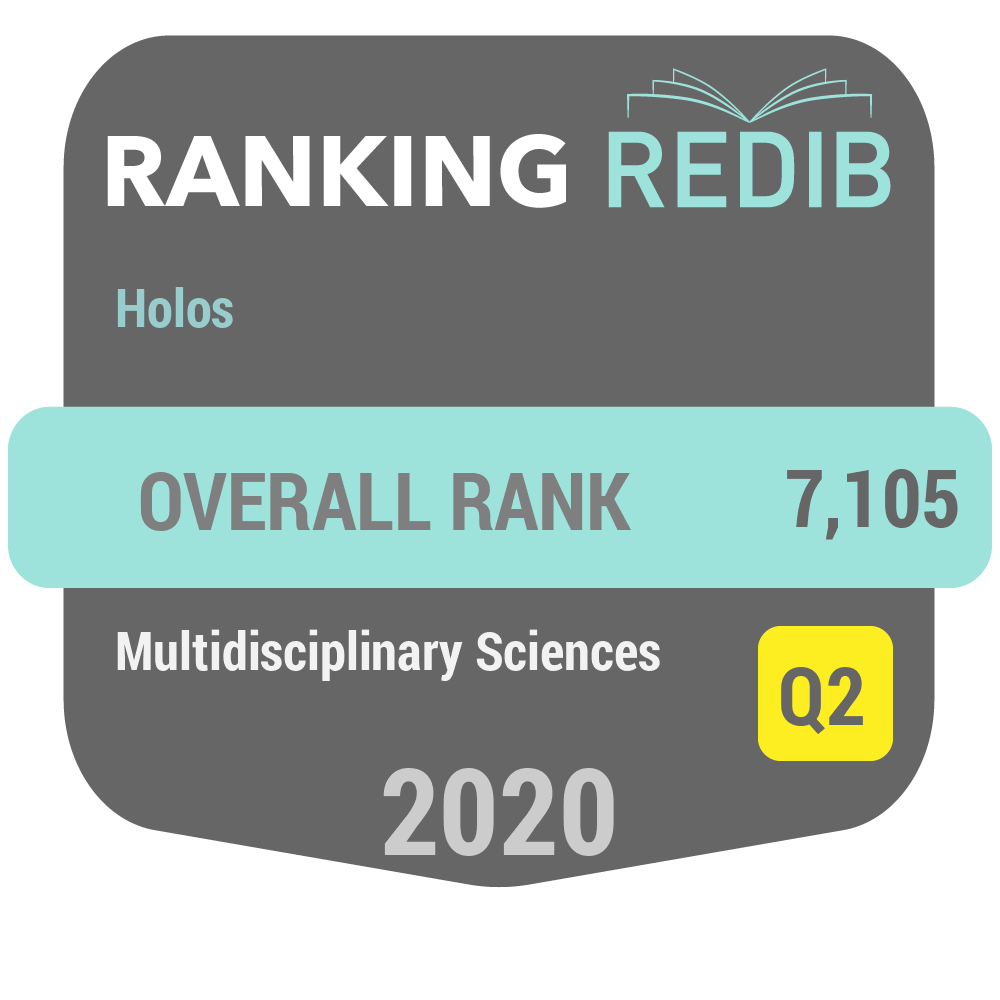UTILIZAÇÃO DA BIOMASSA DE Artemia franciscana COMO ADITIVO ALIMENTAR NO CULTIVO LABORATORIAL DO CAMARÃO MARINHO Litopenaeus schmitti
DOI:
https://doi.org/10.15628/holos.2018.4427Palavras-chave:
Aditivo alimentar, Artemia, camarão marinho.Resumo
O presente trabalho tem por objetivo avaliar a utilização da biomassa de Artemia franciscana como aditivo alimentar no cultivo laboratorial do camarão marinho Litopenaeus schmitti. Durante 30 dias, os camarões (n=20) foram alimentados com ração comercial revestida com 3 diferentes níveis de biomassa de A. franciscana, correspondentes a 1, 3 e 5% da quantidade de ração ofertada. As variáveis temperatura, pH, salinidade, luminosidade, NH3 e NO2- da água foram monitoradas. Como critérios de avaliação foram determinados o ganho de peso absoluto (GPA), o ganho de peso relativo (GPR), a taxa de crescimento relativo (TCR) e o consumo alimentar aparente (CAA) dos camarões. Adicionalmente, a estabilidade da ração física da ração e o teor de umidade da biomassa de A. franciscana foram aferidos. Os resultados relativos à estabilidade física da ração demonstraram que passadas 2 h de imersão, 80,9 ± 0,39% de seu conteúdo permaneceu íntegro. Por sua vez, o teste de umidade da biomassa indicou que 7,49 ± 0,19% de peso de A. franciscana representa a massa corpórea que revestiu as partículas de ração. Ao fim do experimento, o desempenho dos animais quanto ao GPA, GPR e TCR foi melhor nos tratamentos aditivados com maior percentual de biomassa. Já o CAA não apresentou diferenças estatisticamente significativas (P >0,05) nos diferentes tratamentos. Os resultados desse estudo indicam que a adição de biomassa congelada de A. franciscana adulta à rações comerciais, em níveis correspondentes a 1, 3 e 5% da oferta diária de ração, aumenta o ganho de peso de juvenis de L. schmitti.
Downloads
Referências
ABCC – Associação Brasileira dos Criadores de Camarão. Cultivo de camarão marinho: realidade mundial e Brasileira, mitos e verdades sobre sua sustentabilidade ambiental e contribuição para a socioeconomia das regiões de sua intervenção. (2015). http://www.abccam.com.br/site/wp-content/uploads/2015/08/Revista-ABCC-Edi%C3%A7%C3%A3o-Especial-Agosto-de-2015.pdf. Acessado em 14 de Abril de 2016 às 02h22min. 2015.
Bueno, S. L. S. (1990). Maturation and spawning of the white shrimp Penaeus schmitti Burkenroad, 1936, under large scale rearing conditions. Journal of the World Aquaculture Society 21 (3): 170-179.
Camara, M. R. (1994). Dietary phosphatidylcholine requirements of Penaeus japonicus Bate and Penaeus vannamei Boone (Crustacea, Decapoda, Penaeidae). Ph.D. Thesis, University of Ghent, Belgium. 173p.
Camara, M. R. (2001). Dispersal of Artemia franciscana Kellogg (Crustacea; Anostraca) populations in the coastal saltworks of Rio Grande do Norte, northeastern Brazil. Hydrobiologia 466: 145-148.
Camara, M. R. (2003). Towards a sustainable Artemia industry in northeastern Brazil. In: Book of Abstracts, Aquaculture 2003, Salvador, Brazil. World Aquaculture Society, Baton Rouge, Louisiana, EUA. p. 148.
Camara, M. R., Monteiro, P. A., Reis, L. G., Costa, M. F. (2004). Farming Artemia in a multi-cycle culture system in Northeastern Brazil. World Aquaculture 35 (2): 40-42.
Carr, W. E. S. (1988). The molecular nature of chemical stimuli in the aquatic environment. In: Sensory Biology of Aquatic Animals. J. Atema, R. R. Fay, A. N. Popper & W. N. Tavolga (Editors). pp. 3-28. Springer-Verlag, New York, NY.
Córdova-Murueta, J. H., Garcia-Carreño, F. L. (2002). Nutritive value of squid and hydrolysed protein supplement in shrimp feed. Aquaculture 210: 371-384.
Costa-Pierce, B. A., Laws E. A. (1985). Chemotactically-active feed additive for prawns (Macrobrachium rosenbergii). The Progressive Fish-Culturist 47: 59-61.
Costero, M., Meyers, S. P. (1993). Evaluation of Chemorreception by Penaeus vannamei under Experimental Conditions. The Progressive Fish-Culturist 55: 157-162.
Coutteau, P., Santos, M., Kontara, E. K., Camara, M. R. (2000). Effect of feeding attractants on feeding rate and on growing performance of penaeid shrimp. European Aquaculture Society, Special Publication 28: 153.
D’Abramo, L. R., Castell, J. D. (1997). Research Methodology. In: Crustacean Nutrition. L. R. D’Abramo, D. E. Conklin and D. M. Akiyama (Editors). pp. 3-25. World Aquaculture Society, Lousiana State University, Baton Rouge, USA.
Felix, N., Sudharsan, M. (2004). Effect of glycine betaine, a feed attractant affecting growth and feed conversion of juvenile freshwater prawn Macrobrachium rosenbergii. Aquaculture Nutrition 10: 193-197.
Harpaz, S. (1997). Enhancement of growth in juvenile freshwater prawns, Macrobrachium rosenbergii, through the use of a chemoattractant. Aquaculture 156: 221-227.
Hartari, R., Briggs, M. R. P. (1993). Effect of feeding attractants on the behaviour and performance of juvenile Penaeus monodon Fabricius. Aquaculture Fisheries Management 25: 613-624.
Heinen, J. M. (1980). Chemoreception in decapod crustacean and chemical feeding stimulants as potential fees additives. Proceedings of the World Mariculture Society 11: 319-334.
Hindley, J. P. R. (1975). The detection, location and recognition of food by juvenile banana prawns, Penaeus merguiensis de Man. Marine Behaviour Physiology 3: 193-210.
Kolkovski, S., Koven, W. M., Tandler, A. (1997). The mode of action of Artemia in enhancing utilization of microdiets by gilthead seabream Sparus aurata larvae. Aquaculture 155: 193-205.
Lavens, P., Sorgeloos, P. (1996). Manual on the production and use of live food for aquaculture. FAO Fisheries Technical Papaer 361. Rome, FAO. 295p.
Lee, P. G., Meyers, S. P. (1996).Chemoattraction and feeding stimulation in crustaceans. Aquaculture Nutrition 2: 157-164.
Léger, P., Bengtson, D. A., Simpson, K. L., Sorgeloos, P. (1986). The use and nutritional value of Artemia as a food source. Oceanography and Marine Biology: an Annual Review 24: 521-623.
Lenz, P. H., Browne, R. A. (1991). Ecology of Artemia. In: Artemia Biology R. A. Browne, P. Sorgeloos & C. N. A. Trotman (Editors). pp. 237-253. CRC Press, Boca Raton, Florida, EUA.
Martinez-Cordova, L. R., Campana-Torres, A., Porchas-Cornejo, M. A. (2002). The effects of variation in feed protein level on the culture of white shrimp, Litopenaeus vannamei (Boone) in low-water exchange experimental ponds. Aquaculture Research 33: 995-998.
Misamore, M., Browdy, C. L. (1997). Evaluating hybridization potential between Penaeus setiferus and Penaeus vannamei through natural mating, artificial insemination and in vitro fertilization. Aquaculture 150: 1-10.
Montemayor-Leal, J., Mendoza-Alfaro, R., Aguilera-González, C., Rodríguez-Almaraz, G. Moléculas sintéticas y extractos animales y vegetales como atractantes alimentícios para el camarón blanco Litopenaeus vannamei. Revista Aquatic 22: 1-10. http://www.revistaaquatic.com/aquatic/art.asp?t=p&c=183. Acessado em 14 de Abril de 2016 às 02h22min. 2015.
Naylor, R. L., Goldberg, R. J., Primavera, J. N., Kautsky, N., Beveridge, M. C. M., Clay, J., Folke, C., Lubchenco, J., Meoney, H., Troell, M. (2000). Effect of aquaculture on world fish supplies. Nature 405: 1017-1024.
Naylor, R. L., Willians, S. L., Strong, D. R. (2001). Aquaculture – A Gateway for Exotic Species. Science 294: 1655-1656.
New, M. B. (1976). A review of dietary studies with shrimps and prawns. Aquaculture 9: 101-144.
Nunes, A. J. P., Gesteira, T. C. V, Goddard, S. (1997). Food ingestion and assimilation by the Southern brown shrimp Penaeus subitilis under semi-intensive culture in NE Brazil. Aquaculture 149: 121-136.
Penaflorida, V., Virtanen, E. (1996). Growth, survival and feed conversion of juvenile shrimp (Penaeus monodon) fed a betaine/aminoacid additive. Israeli Journal of Aquaculture 48: 3-9.
Pittet, A., Ellis, J. Lee, P. G. (1996). Methodology for the identification and measurement of chemical stimulants for penaeid shrimp. Aquaculture Nutrition 2: 175-182.
Primavera, J. H. (1993).A critical review of shrimp pond culture in the Philippines. Reviews in Fisheries Science 1 (2): 151-201.
Rodrigues, J. (2005). Carcinocultura Marinha – Desempenho 2004. Revista da Associação Brasileira dos Criadores de Camarão (ABCC) 7 (2): 38-44.
Sanchez, D. R., Fox, J. M., Lawrence, A. L., Castille, F. L. (2005). A Methodology for Evaluation of Dietary Feeding Stimulants for the Pacific White Shrimp, Litopenaeus vannamei. Journal of the Aquaculture Society 36: 15-23.
Seidel, C. R., Kryznowek, J., Simpson, K. L. (1980). Amino acid composition and electrophoretic protein patterns of Artemia from five geographical locations. In: The brine shrimp Artemia. Vol. 3. G. Persoone, P. Sorgeloos, O. Roels & E. Jaspers (Editors). pp. 375-382. Universa Press, Wetteren, Bélgica.
Smith D. M., Burford, M. A., Tabrett, S. J., Irvin, S. J., Ward, L. (2002). The effect of feeding frequency on water quality of the black tiger shrimp (Penaeus monodon). Aquaculture 207: 125-136.
Smith D. M., Tabrett, S. J., Barclay, M. C., Irvin, S. J. (2005). The efficacy of ingredients included in shrimp feeds to stimulate intake. Aquaculture Nutrition 11: 263-272.
Sorgeloos, P., Lavens, P., Léger, P., Tackaert, W., Versichele, D. (1986). Manual for the culture and use of the brine shrimp Artemia in aquaculture. FAO, ARC, Gent, Bélgica. 319p.
Sorgeloos, P., Coutteau, P., Dhert, P., Merchie, G., Lavens, P. (1988). Use of brine shrimp, Artemia spp., in larval crustacean nutrition: a review. Reviews in Fisheries Science 6: 55-68.
Sorgeloos, P., Dhert, P., Candreva, P. (2001). Use of brine shrimp, Artemia spp., in marine fish larviculture. Aquaculture 200: 147-159.
Tackaert, W., Sorgeloos, P. (1991). Salt, Artemia and shrimp: integrated production of salt, Artemia and shrimp in the People’s Republic of China. World Aquaculture 22 (3): 11-17.
Zar, J. H. (1990). Biostatistical Analysis. Fourth edition. Prentice-Hall. 663p.
Weston, D. P. (1991). The effects of aquaculture on indigenous biota. In: Aquaculture and Water Quality. Impacts of Aquaculture Production on Water Quality Resources. D. E. Brune and J. R. Tomasso (Editors). The World Aquaculture Society. Advances in World Aquaculture 3: 534-567.





































